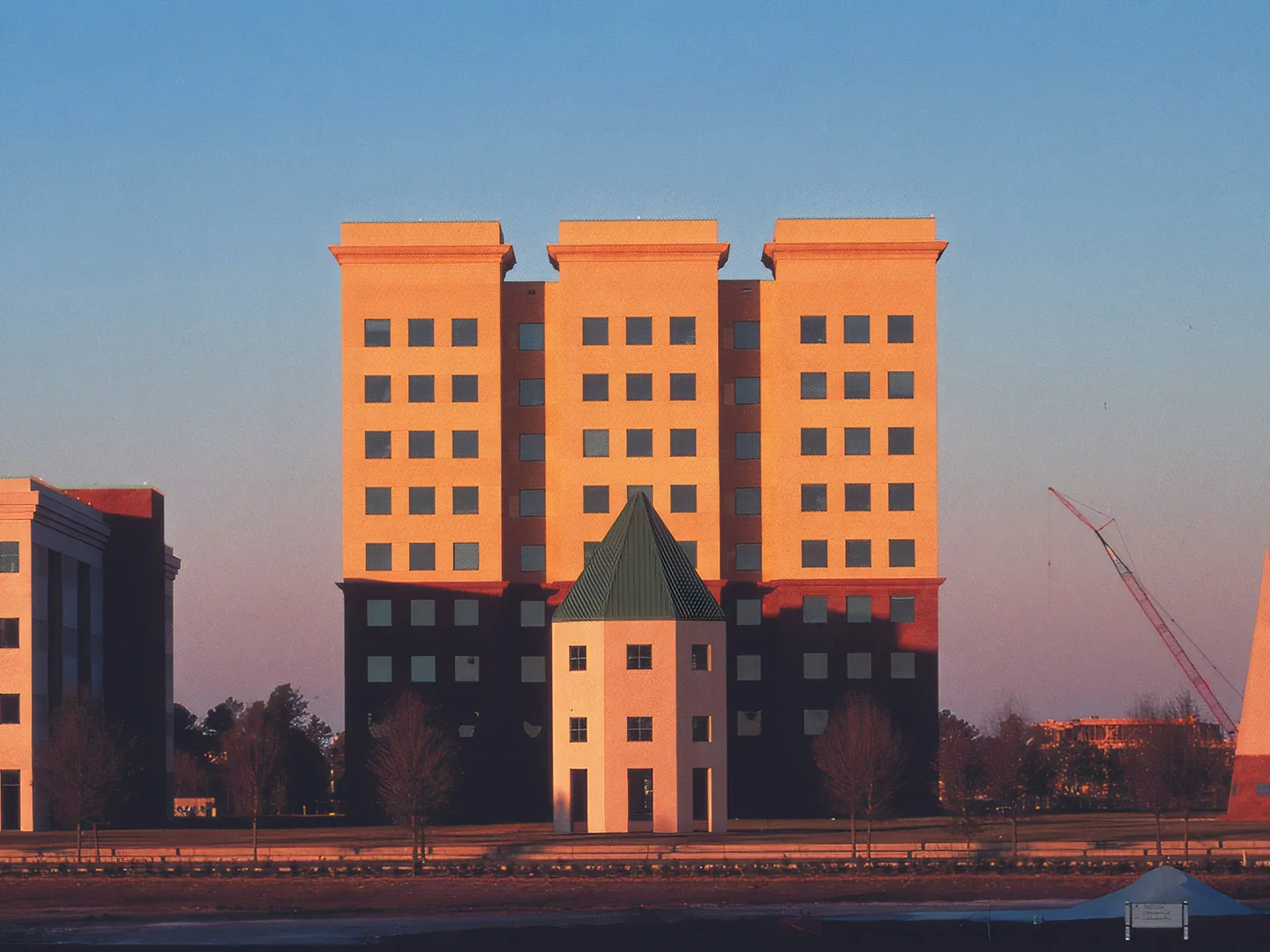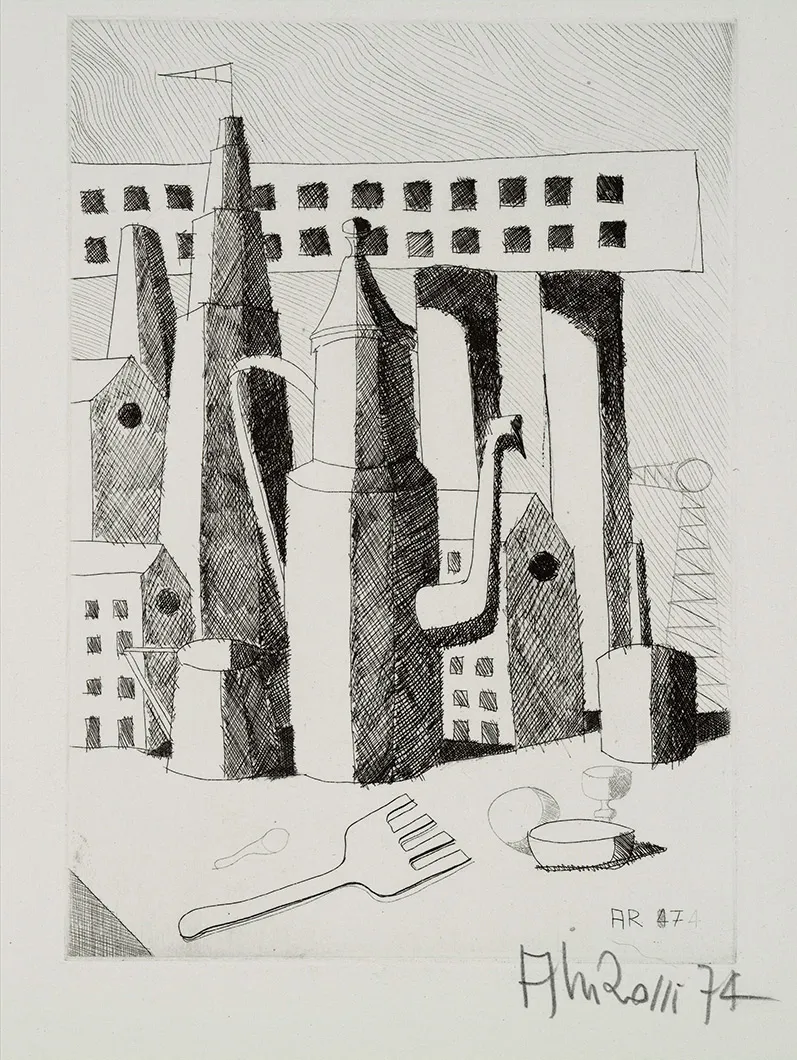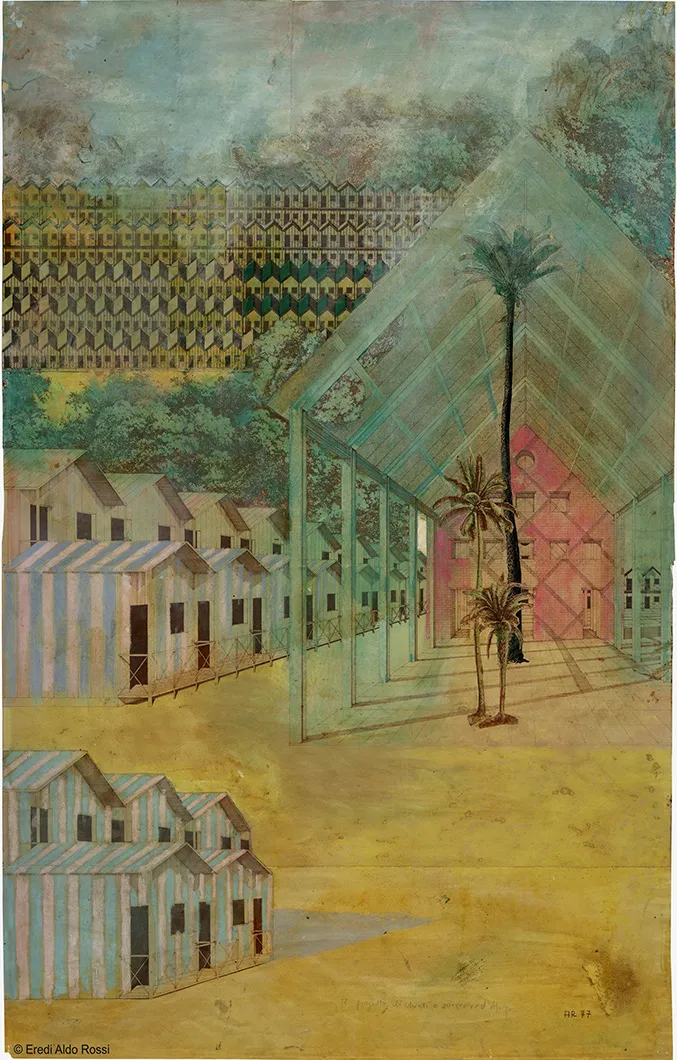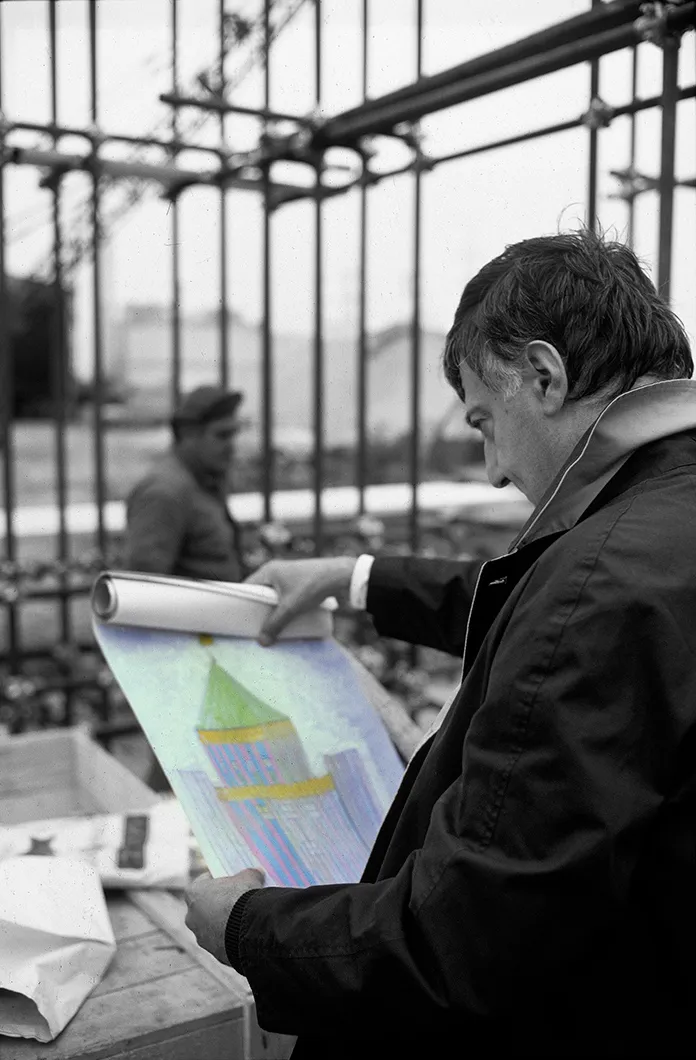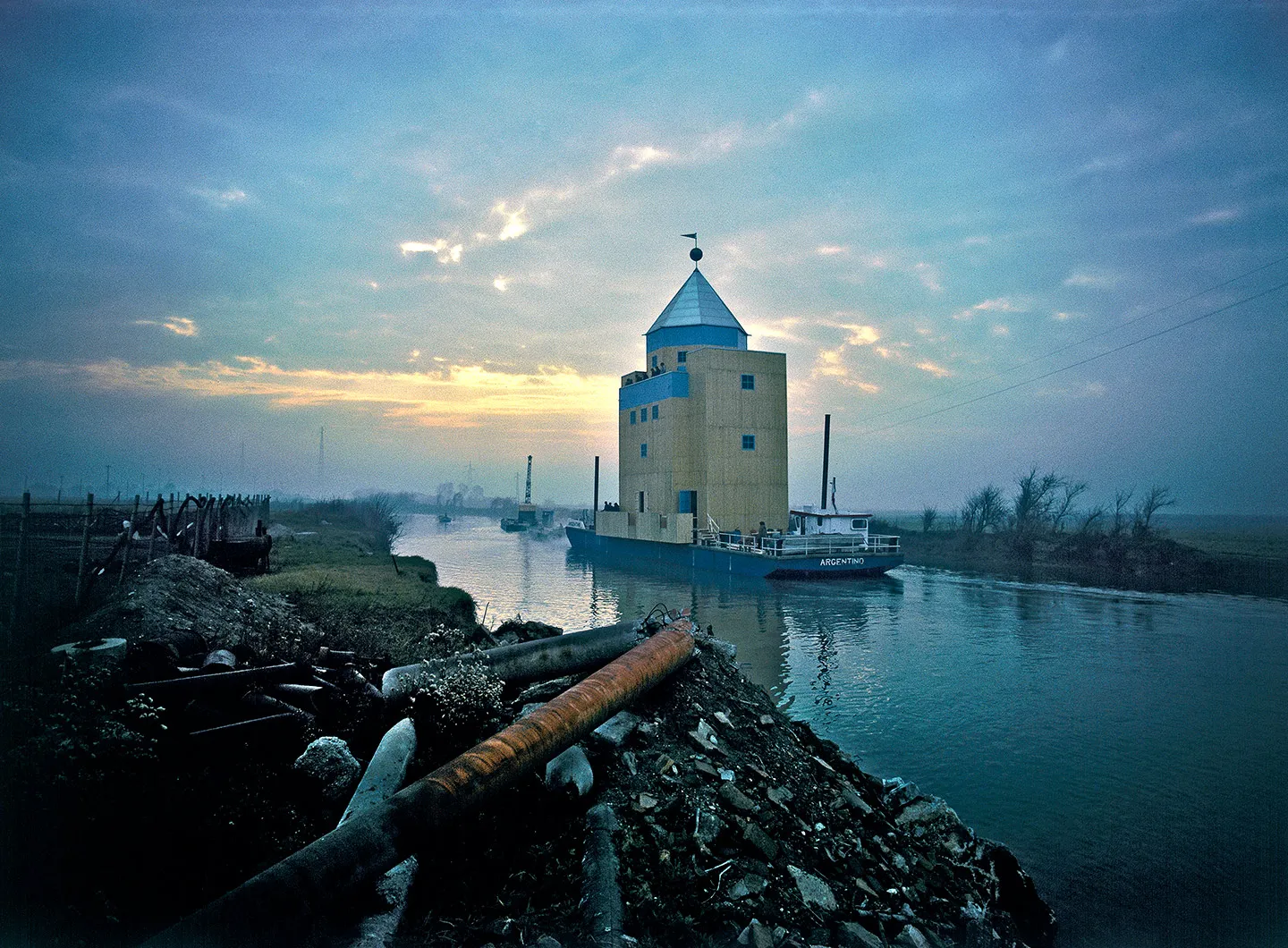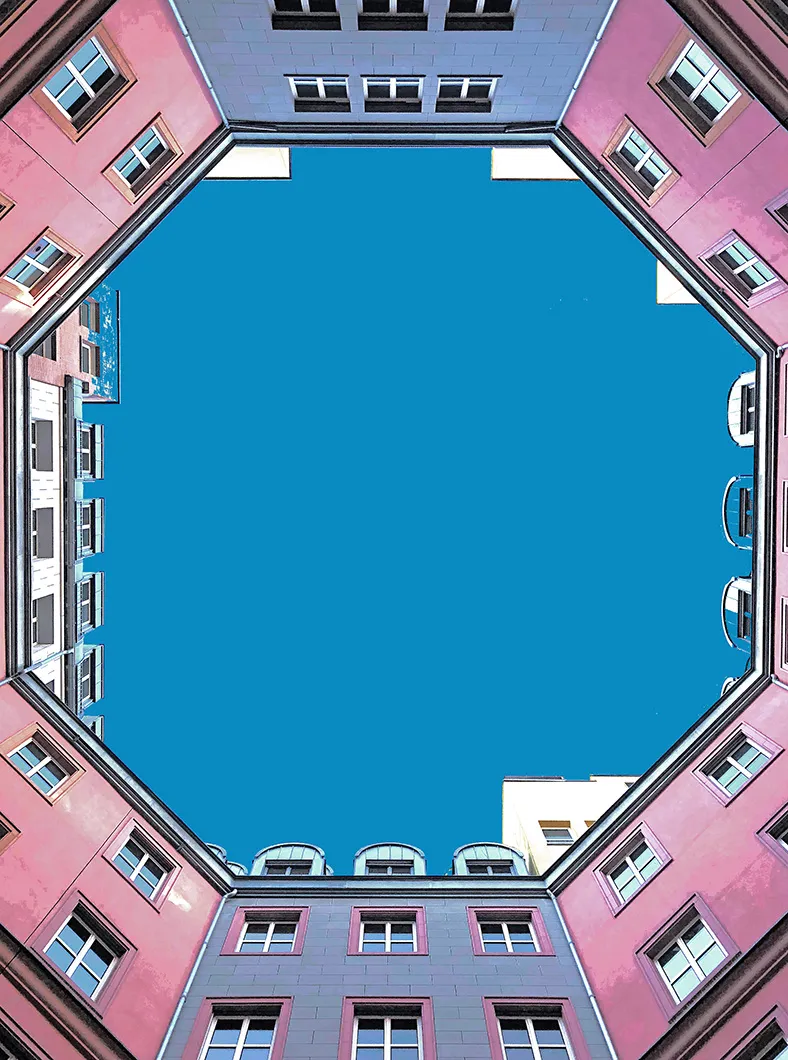In partnership with MiCodmc, a selection of establishments ripe for discovery during the 63rd edition of the Salone del Mobile.Milano, from 8th to 13th April
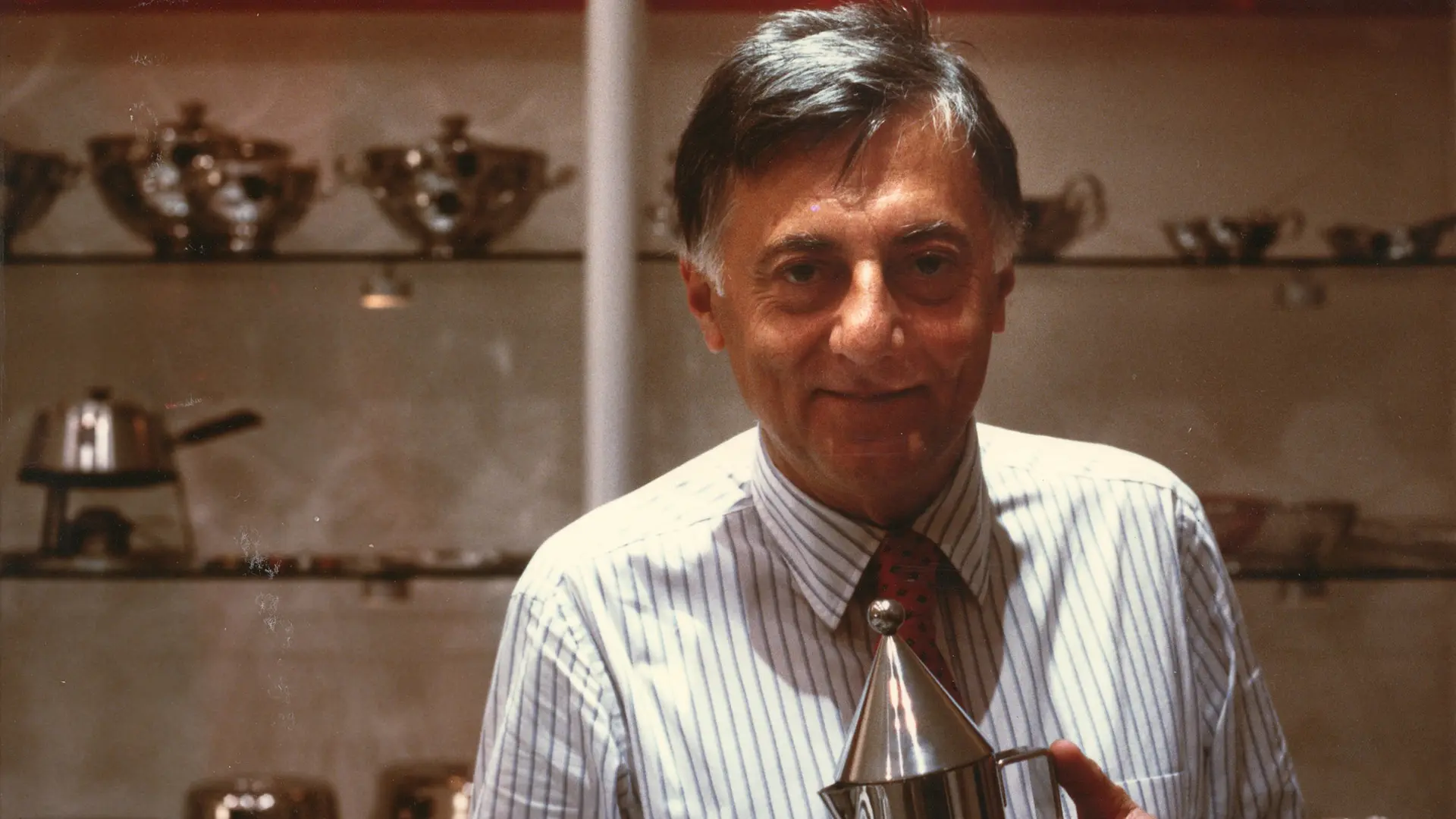
Aldo Rossi fotografato con la caffettiera La conica, disegnata per Alessi - Collezione MAXXI Architettura. Archivio Aldo Rossi
The important monograph dedicated to the first Italian Pritzker Prize winner in the enlightening words of architect Franco Raggi. An exceptional guided tour to discover the exhibition presented at Rome’s MAXXI museum.
The Aldo Rossi exhibition at MAXXI in Rome demonstrates in a detailed and allusive fashion the inextricable relationship between the sketch and the architectural object; it introduces us to the complex visionary and tangible world of the Milanese architect. I will try to list a few features.
Aldo Rossi double
AR's work has always fluctuated between the two worlds of drawing and the final object, creating an iconography and an iconology that belong, on different scales, to the world of the object, the world of the building and the city as a stratification of constructed places.
In AR's imaginative universe, these two scales overlap and integrate and, through drawing, merge into a single landscape of the imagination and vision, profound sources of the meaning of architecture. Architecture as a macro-object and inhabited space on the one hand, objects as micro-architectures and condensers of memories on the other.
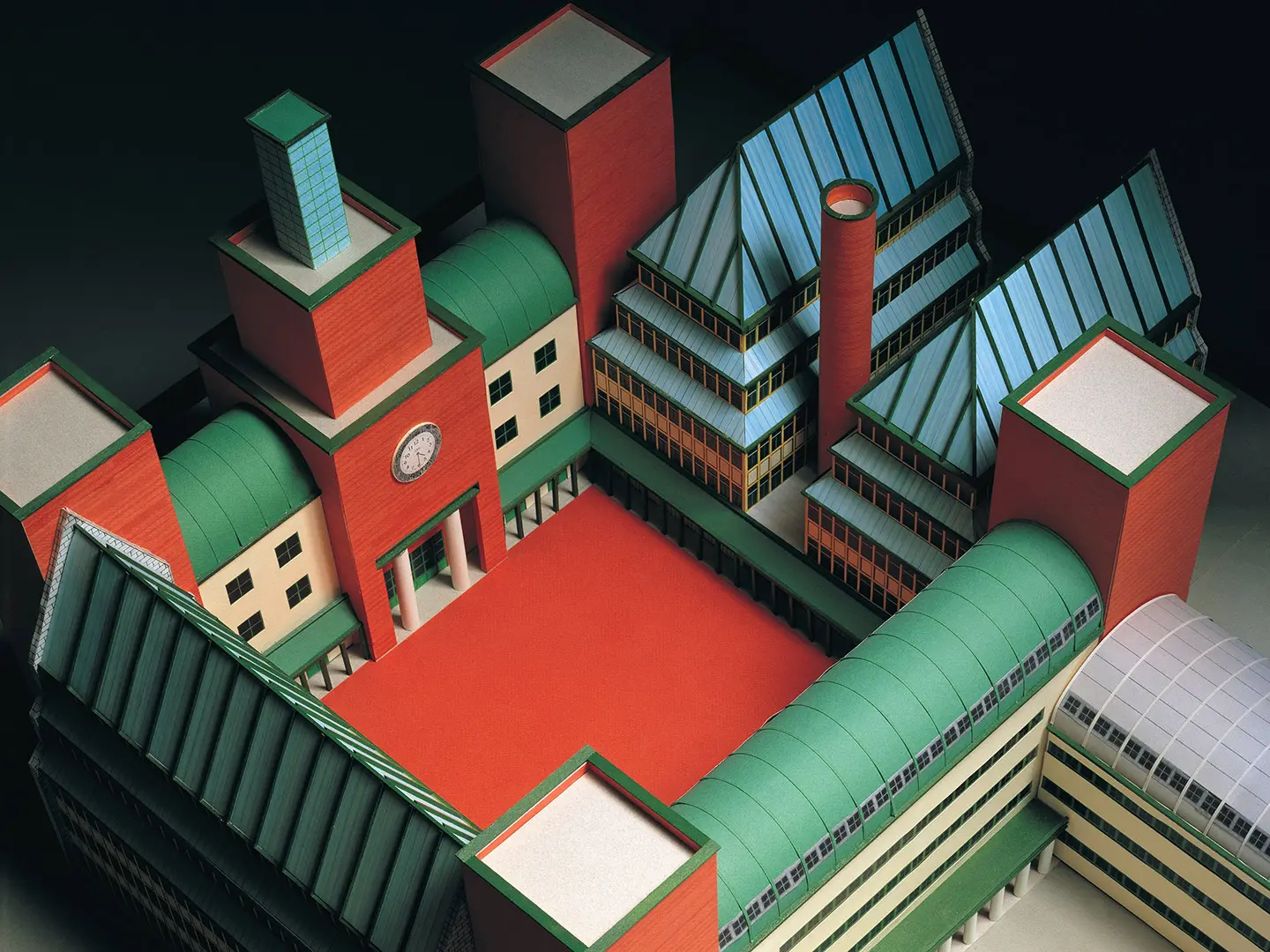
Aldo Rossi con M. Scheurer - Progetto per un nuovo stabile amministrativo per la UBS, Lugano, Svizzera (1990)
Modello, s.d. carta, cartoncino, legno - Collezione MAXXI Architettura. Archivio Aldo Rossi © Eredi Aldo Rossi
Aldo Rossi and Things
In the exhibition of works placed side by side to underline this fascinating ambiguity, the architectural models, drawings and objects create a laconic and multi-faceted landscape, timeless and – almost – without context, except for the mental context of AR in which the large hand of San Carlone, the gigantic coffee pot, the maritime lighthouse and the bathing cabin build a subconscious map of symbolic and ritual emergencies and a personal catalogue of icons that cannot be reduced to the banal language of rationality and architectural functionalism.
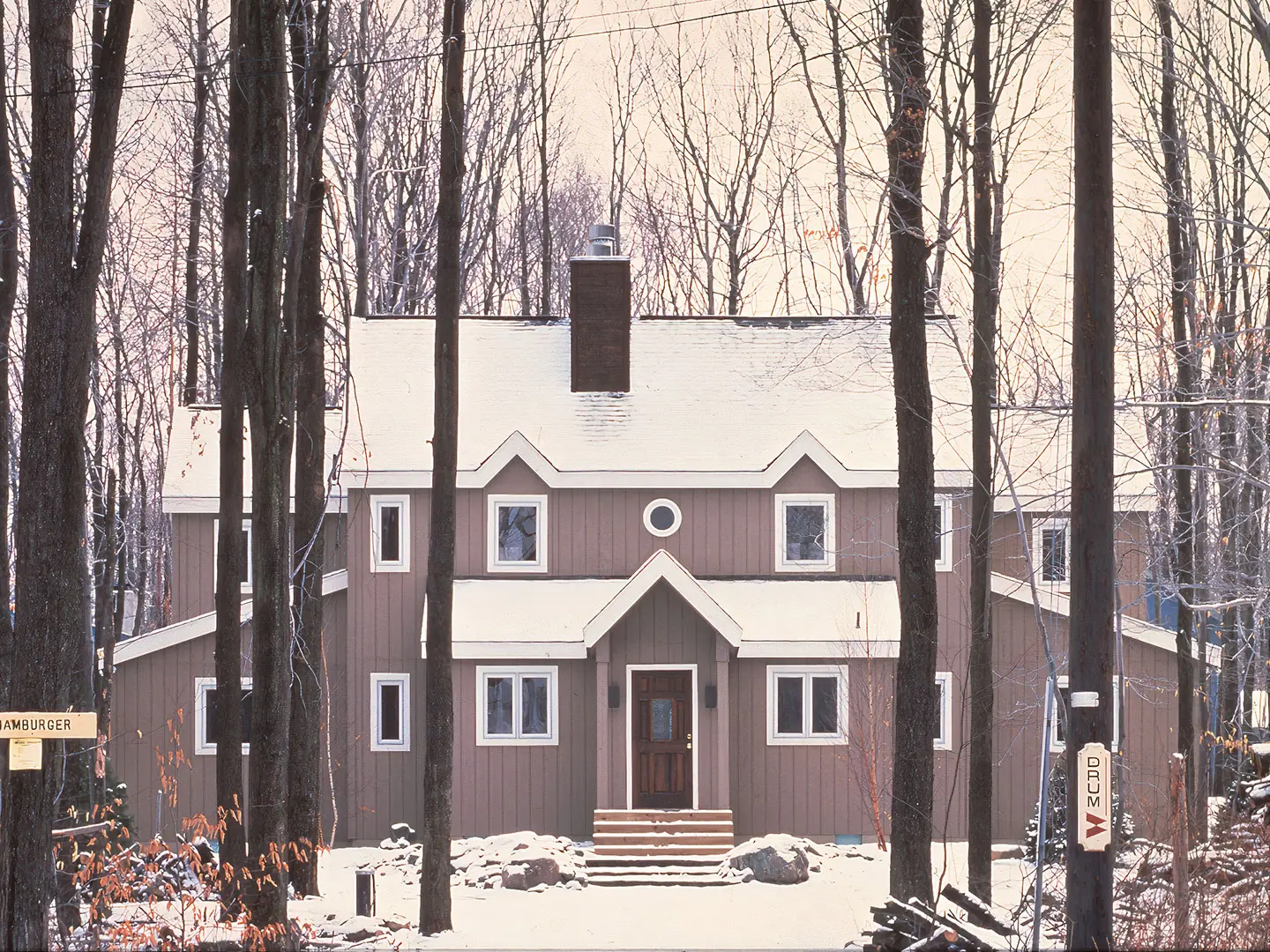
Aldo Rossi - Casa a Mount Pocono, Pennsylvania (USA), 1995 - Fondazione Aldo Rossi
Aldo Rossi and the contemporary
AR's architecture fascinates us because of its radical rejection of the contemporary, understood as an exhausting appeal for the technological updating of languages; an update that relegates architectural design to a banal destiny of temporary renewal, one without end and without context. If the function of architecture is also to produce astonishment, estrangement, surprise and poetic conflict, AR's architecture is a highly functional one, unlikely to decay. In these logical and repetitive procedures, made up of continuous and sometimes obsessive references, but also of profound reflections on the sense of the city as a stratified human artefact par excellence, AR's poetic, figurative and technical universe finds its profound and convincing raison d’être.
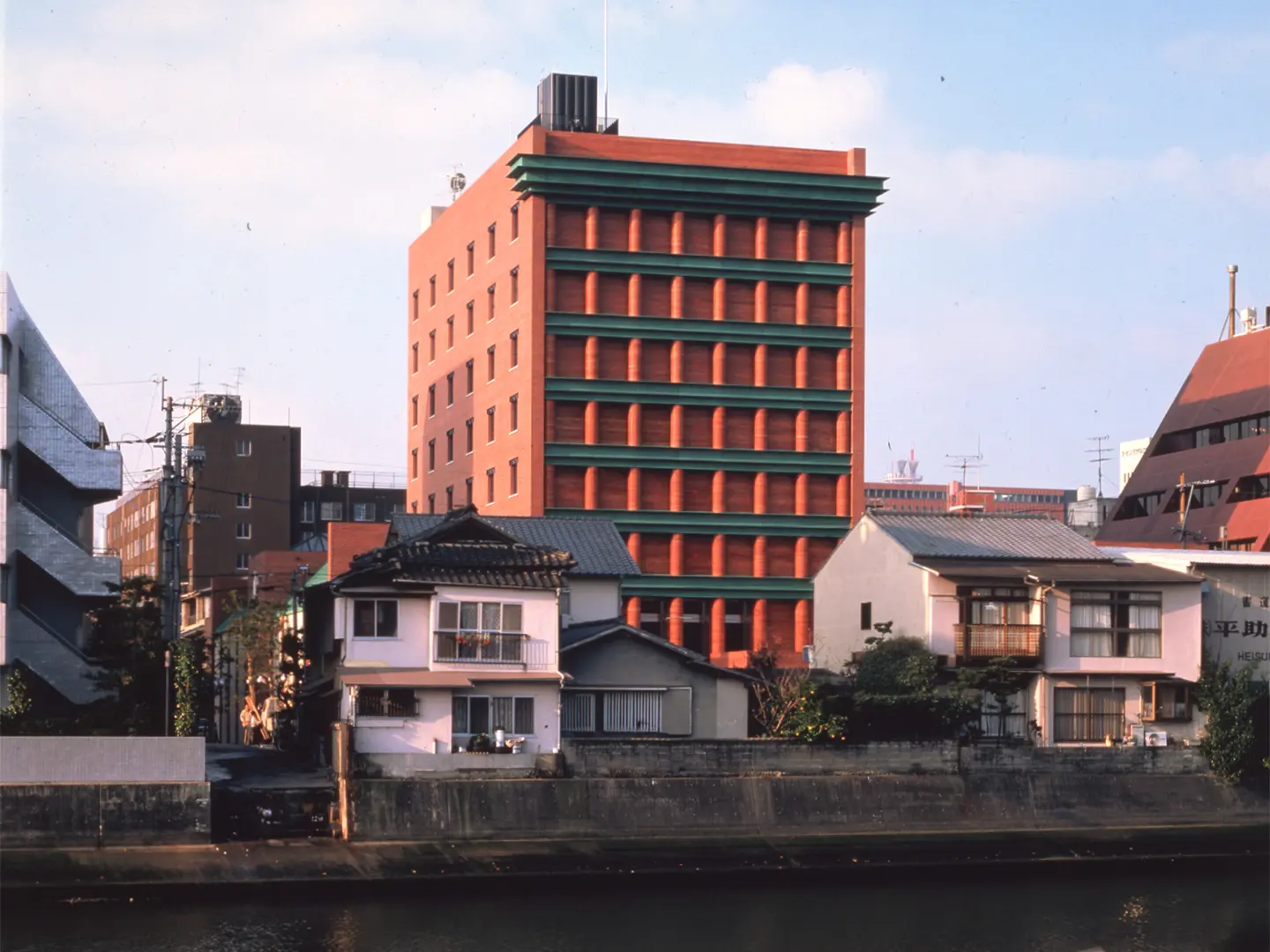
Aldo Rossi, con M.Adjmi, T. Horiguchi, S. Uchida - Complesso alberghiero e ristorante “Il Palazzo”, Fukuoka (Giappone), 1987-1990 - Fotografia Nacasa and Partners - Fondazione Aldo Rossi
Aldo Rossi and context
The idea of context as the logical resting place for one's vision is one of the central and conflicting themes of European urban architecture. Context, however, for AR does not involve a mimetic approach but, if anything, an integrative one, in the sense that the urban context can be seen and imagined as a sum of small contexts with autonomous morphological characters, ones that are capable of suggesting analogies, juxtapositions and differences. The concept of analogy and otherness runs through all AR's work, suggesting acute juxtapositions, at times improper, as in the Berlin housing blocks built on a massive, syncopated memory of found objects and quotations, bound together by an unprecedented chromatic opulence. Seemingly non-modern houses that establish a lively dialogue with the existing context in opposition to the predictability and homogeneity of the traditional setting.
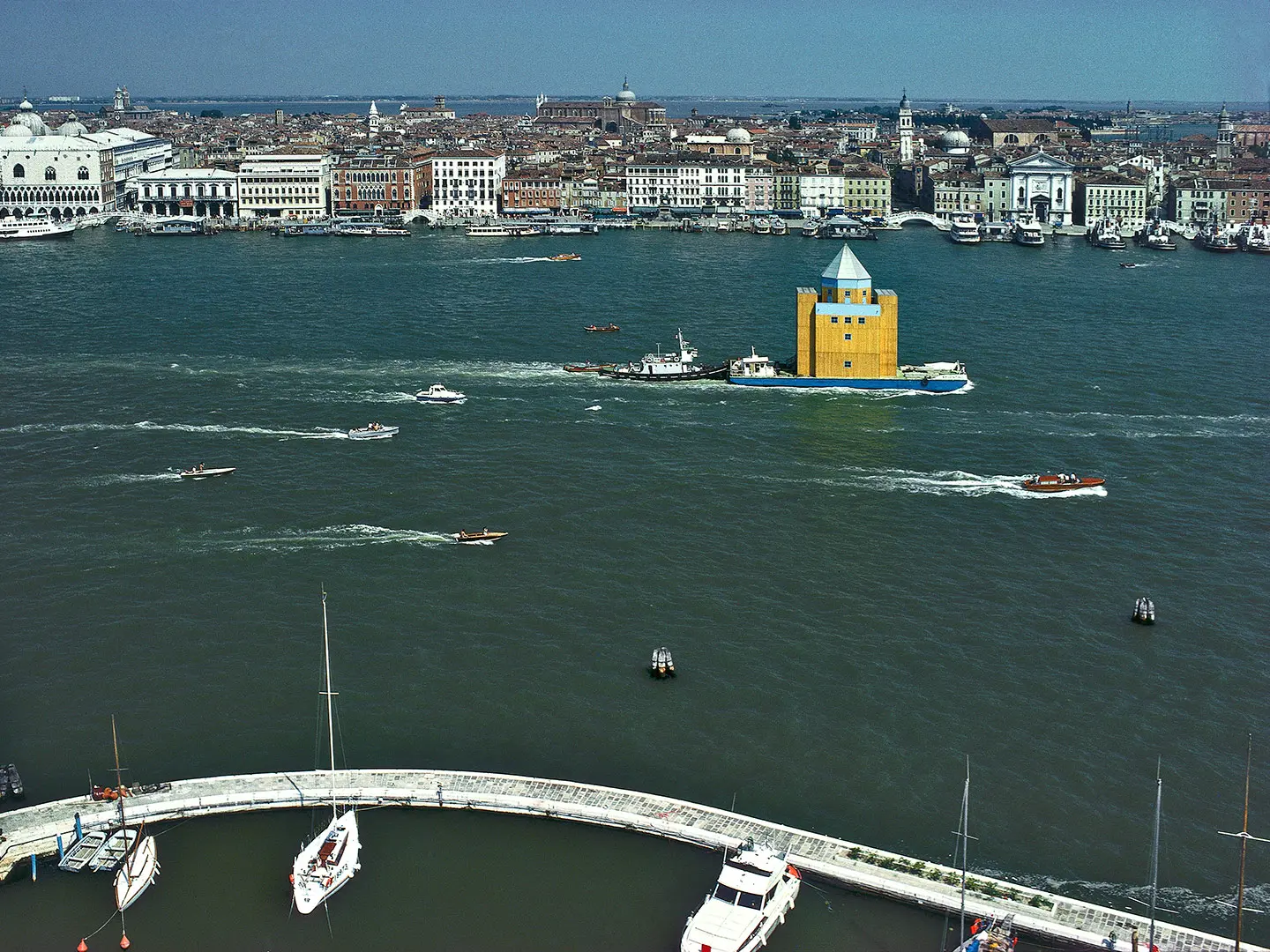
Reportage fotografico della costruzione e del viaggio del Teatro del Mondo da Venezia a Dubrovnik, 1979-1980 - Fotografie di Antonio Martinelli - © Copyright Antonio Martinelli
Aldo Rossi and memory
The materials of memory are both weighty and evanescent. They stratify, aggregate and consolidate in individual and collective language with their own unfathomable laws. The principle of appearance seems to favour AR's compositional procedures. Monumental fragments appear, such as the iconic spires and domes, functional archetypes such as lighthouses or gasometers, domestic and emotional apparitions such as the Elba cabins and school clocks that mark the motionless time of Rossi's landscapes. Memories emerge in AR's architecture as devices with a poetic reaction, almost independent of the functional obligation, but necessary for the construction of a setting.


 Salone Selection
Salone Selection
